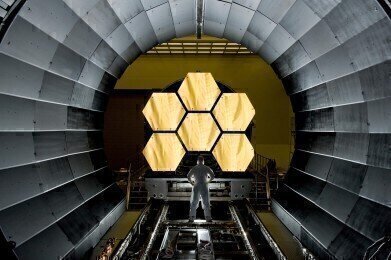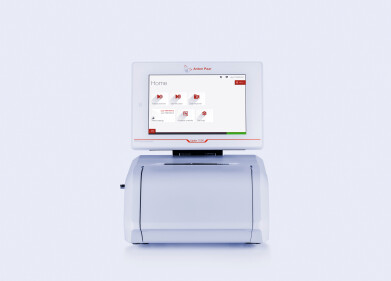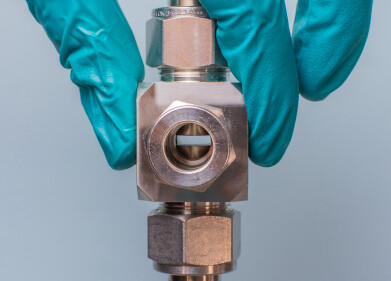Mass Spectrometry & Spectroscopy
What Are the Biggest Scientific Breakthroughs of 2018?
Dec 04 2018
As 2018 is nearing a close, Labmate is taking a look at some of the most ground-breaking scientific discoveries of the year. If you’ve already read parts 1-5 of the series, you’ll be clued up on our top 5 scientific breakthroughs of the year. Not managed to check them out yet? Don’t worry, this post will give an overview of each impressive project and the impact it could have on society…
1. Nobel Prize for Medicine
Dr James P. Allison and Dr Tasuku Honjo made history this year as they were awarded with the coveted Nobel Prize for Medicine and Physiology. Their work into the utilisation of the body’s immune system for fighting certain types of cancer could potentially save the lives of thousands around the world.
The two researchers successfully formed a link between immunotherapy and cancer treatment by discovering exactly how the different cells interact with one another. By targeting T-cells and blocking their checkpoint, they can protect the cells from cancerous cells, making it easier to kill them.
2. Nobel Prize for Chemistry
This year’s Nobel Prize for Chemistry was awarded to Frances Arnold, George P. Smith and Gregory Winter for their research using the principle of evolution to produce new chemical compounds.
Their combined work, using the directed evolution of enzymes and antibodies, can help to provide cancer treatments for certain strains, as well as aiding research for finding new environmentally-friendly methods of manufacturing chemical substances.
Their efforts not only provide a new insight into the many uses and functions of chemistry but can help to shed light on the fight against cancer.
3. Nobel Prize for Physics
The Nobel Prize for Physics this year made history in more than one way. Not only was the research ground-breaking in its own way, one of the winners, Donna Strickland, is the third female winner of the award.
Dr Strickland, along with fellow scientists Arthur Ashkin and Gerard Mourou, won the award for their development of a laser technique, known as chirped pulse amplification (CPA). Dr Ashkin invented the ‘optical tweezer’, a technique that can trap atoms, particles and viruses between two beams of lights for observation and research without damaging the particle.
The three researchers’ work can be used across a range of areas, including optical eye surgery, helping to restore sight to the visually impaired.
4. Curing Blindness
This next breakthrough is along the same lines as the previous one, in that it aims to restore sight. The most common cause of blindness in the UK is age-related macular degeneration, caused when the macular – the part of the retina that allows detailed vision – is damaged.
Two British doctors developed a ‘patch’ made out of stem cells that could be placed on the back of the eye, helping to restore damaged cells and improve vision. The two patients that took part in this experimental treatment noted significant visual improvement in just a year of wearing the ‘patch’.
With further studies and research, this technology could provide an affordable treatment for those suffering from age-related macular degeneration.
5. Antarctica’s Greenhouse
The constant sub-zero temperatures in Antarctica make it almost impossible to grow fresh fruit and vegetables there. Shipments are made a few times a year to bring in produce from overseas to keep the locals fed and healthy. But this year German scientist Paul Zabel developed an artificial greenhouse that could make harvesting produce a reality for those in the Antarctic.
The greenhouse, which was installed and began producing early this year, is housed inside a climate-controlled shipping container. With LED lamps, an abundance of carbon dioxide and a nutrient-rich mist, the greenhouse can successfully grow produce without natural sunlight.
This project is just one part of a larger mission to take a similar greenhouse into space, potentially allowing astronauts to grow produce on Mars or the moon.
A ground-breaking year
All in all, 2018 has been a great year for science. But there are also a number of smaller breakthroughs taking place which don’t get quite the same attention. ‘Determining Hazardous Substances at Arm’s Length’ explores how unknown substances can be identified without contact.
Digital Edition
Lab Asia 31.6 Dec 2024
December 2024
Chromatography Articles - Sustainable chromatography: Embracing software for greener methods Mass Spectrometry & Spectroscopy Articles - Solving industry challenges for phosphorus containi...
View all digital editions
Events
Jan 22 2025 Tokyo, Japan
Jan 22 2025 Birmingham, UK
Jan 25 2025 San Diego, CA, USA
Jan 27 2025 Dubai, UAE
Jan 29 2025 Tokyo, Japan



















